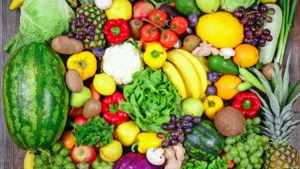Table of Contents
Nutrient Density: Decoding the Nutritional Secrets in Every Food
Understanding Nutrient Density: Beyond Basic Nutrition
The concept of “nutrient density” is becoming a trend in modern nutrition science, yet few truly understand its essence. Unlike traditional approaches focused solely on calories, nutrient density evaluates foods based on their beneficial nutrient-to-calorie ratio.

Nutrient Density: The Ultimate Guide to Maximizing Food Nutrition
Scientific Definition
According to the U.S. National Institutes of Health (NIH), nutrient-dense foods provide substantial amounts of vitamins, minerals, antioxidants and other important micronutrients relative to their calorie content.
A Paradigm Shift
Contrary to the traditional “calories in-calories out” approach, nutrient density emphasizes quality over quantity. A Harvard University study revealed that nutrient-density focused diets reduce chronic disease risk by 25% compared to calorie-counting approaches.
Unexpected Nutrient-Dense Superfoods
Beyond common fruits and vegetables, many lesser-known foods offer exceptional nutrient density:
Nutrition Powerhouses
- Seaweed: Rich in iodine, vitamin K, folate and trace minerals
- Organ meats: Exceptional source of vitamin A, B12, iron and copper
- Camu camu: Amazonian berry with 60× more vitamin C than oranges
- Offal: Often overlooked but extremely nutrient-rich
Nutrient Density Comparison Chart
| Food | Nutrient Density Score | Key Nutrients |
|---|---|---|
| Kale | 1,000 | Vitamin K, A, C, calcium |
| Beef Liver | 750 | Vitamin A, B12, iron |
| Chia Seeds | 650 | Omega-3s, fiber |
| Broccoli | 520 | Vitamin C, sulforaphane |
Nutrient Density and Weight Loss: The Complex Relationship
The connection between nutrient density and weight management is more nuanced than commonly believed.
Unique Mechanisms
Nutrient-dense foods typically contain more fiber and water, promoting satiety despite lower calorie content. CDC research shows nutrient-density focused individuals consume 500 fewer daily calories without increased hunger.
Controversial Perspectives
Not all nutrient-dense foods are low-calorie. Nuts, avocados and olive oil are nutritionally dense yet calorie-rich. This challenges the “low-calorie = less nutritious” assumption.
Practical Strategies to Boost Nutrient Density
5 Lesser-Known Tactics
- Seasonal selection: In-season produce contains 30-40% higher nutrient density
- Smart fat pairing: Extra virgin olive oil enhances fat-soluble vitamin absorption
- Optimal preparation: Light steaming preserves more nutrients than boiling
- Color diversity: Different plant colors represent unique antioxidant groups
- Fermented foods: Kimchi and kefir improve nutrient bioavailability
Unexpected Low-Nutrient Foods
Beyond junk food, many “healthy” options have poor nutrient density:
- Processed fruit juices (lacking fiber)
- Sweetened breakfast cereals
- “Vitamin-enriched” white bread
- Flavored yogurts
Nutrient Degradation: The Global Crisis Nobody Discusses
The Shocking Decline
Studies show modern produce contains only 50-70% of nutrients compared to 50 years ago. Examples:
- Broccoli lost 63% of calcium
- Carrots decreased 75% in magnesium
- Oranges contain 1/8th the vitamin A
Root Causes
Beyond depleted soils, unexpected factors include:
- Crop varieties bred for yield over nutrition
- Early harvesting for long-distance transport
- Cold storage degrading sensitive vitamins
- Supermarket lighting destroying nutrients
Real-World Solutions for Modern Life
Selecting Nutrient-Rich Foods
5 overlooked criteria for identifying high nutrient-density foods:
- Color intensity: Darker greens typically contain more nutrients
- Natural size: Smaller carrots often outperform oversized ones
- Flavor potency: Intensely flavored tomatoes contain more lycopene
- Wild sources: Wild-caught fish have higher omega-3s than farmed
- Harvest timing: Morning-picked greens often have higher nutrient levels
Sample Nutrient-Dense Meal
500-calorie breakfast maximizing nutrient density:
- 2 omega-3 eggs (140 cal)
- 1 cup garlic sautéed spinach (50 cal)
- 1/2 avocado (120 cal)
- 1/2 cup blueberries (40 cal)
- 1 tbsp soaked chia seeds (70 cal)
- Matcha green tea (0 cal)
Conclusion: Nutrient Density as 21st Century Nutrition
In our industrialized food system, understanding nutrient density has transitioned from optional to essential. By focusing on nutrient density rather than just calories, we can:
- Prevent deficiencies while consuming fewer calories
- Naturally reduce chronic disease risk
- Maintain ideal weight without extreme dieting
- Optimize cellular health
Start with small changes: add one new vegetable weekly, prioritize whole foods, and listen to your body rather than following rigid diets. Nutrient density isn’t a diet – it’s an intelligent lifestyle for the modern world.